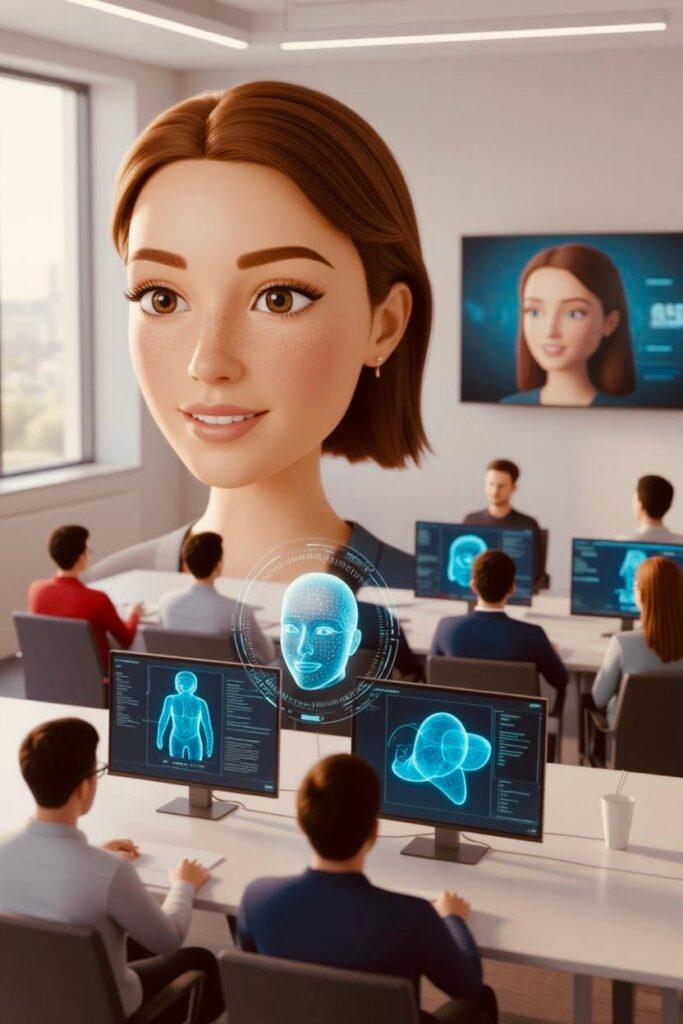Gen AI Transforming education, heritage and entertainment
Perhaps few remember the 1927 movie ‘Metropolis’ in which actress Brigitte Helm impersonated a robot in a metallic looking suit. ‘Star Wars’ is another famous movie of its time in which actor Anthony Daniels performed as a robot.
Later, in many science fiction films humans very convincingly mimicked the mechanical movements and styles of robots while walking, talking and doing chores.
The times have changed. Gen AI powered avatars now represent humans. These hyper realistic digital humanoids mimic real-world speech, expression and behavior of humans. Powered by deep learning, computer vision and natural language processing, these avatars are now being deployed in entertainment, education and cultural heritage preservation with unbelievable realism and emotional depth. Machine intelligence coupled with human likeness has opened up immense possibilities for startups and entrepreneurs.
Hyper realistic AI avatars are created with 3D modeling, motion capture, voice cloning and large language models (LLMs). These avatars can either be replicas of real people, living or historical. Or entirely fictional beings designed with intricate human traits. They can talk, emote, gesture and respond in real time. Gen AI tools like Omniverse, Synthesia, MetaHuman Creator and voice AI platforms like Resemble.ai or ElevenLabs have democratized the creation of such avatars.
Transforming education with humanoid tutors
Imagine students in a classroom being guided through by a lifelike avatar of Albert Einstein or a native Arabic speaking digital tutor correcting pronunciation in real time. Through avatars, Gen AI is creating scalable, interactive and deeply engaging learning experiences.
Applications
Virtual tutors: Avatars that adapt to the pace of a student, his accent and learning style.
Historical simulations: Hyper realistic avatars of great scientists, poets or leaders who can interact with students in virtual history lessons.
Language learning: Avatars can conduct live conversations in multiple languages and correct grammar and tone.
Startup Opportunities
EdTech startups can build platforms for K–12, corporate training, or vocational education. Startups can focus on differentiators like
real time responsiveness, multilingual support, and emotional intelligence.
Digital Immortality
AI avatars are offering new ways of preserving and interacting with cultural memory. Historical figures, tribal elders and endangered storytellers can be digitally preserved as avatars. This can
allow future generations to interact with them as if in person.
Applications
Virtual Museums: Avatars of historical figures guiding visitors through heritage exhibits.
Oral histories: Digitally reconstructed elders or scholars sharing folklore, poetry, and traditions in native tongues.
Reconstructing lost cultures: In the case of videos not being available, Gen AI can recreate approximate avatars from images, texts and voice samples.

Startup Opportunity
Heritage tech startups, in partnership with museums, cultural foundations or governments, can create immersive digital exhibits or mobile apps to bring ancient voices and cultures back to life.
Entertainment Revolution
Life-like avatars are being used to bring deceased actors back to life on screen. Synthetic influencers are simulating celebrities for brand endorsements.
Applications
Digital actors: Avatars can be cast in multiple roles. It can reduce production costs and time.
Interactive games: AI characters in games or virtual reality environments that adapt to player behavior in real time.
Virtual concerts: Avatars representing music legends can perform without being physically present.
Startup Opportunity
Entertainment tech startups can develop avatar-as-a-service platforms for filmmakers, game developers or musicians. Gen AI influencers and virtual brand ambassadors can appear on social media.
Startups interested in this field need to be conversant with several foundational technologies, some of which are listed below.
1. Generative Adversarial Networks (GANs) for face and texture realism.
2. Text-to-Speech and Voice Cloning for accurate vocal synthesis.
3. Motion Capture (Mocap) and Pose Estimation for realistic gestures.
4. LLMs for intelligent, context aware dialogue.
5. 3D Rendition Engines like Unreal Engine or Unity for avatar embodiment.
Cloud infrastructure, edge computing and low-latency video streaming plays a crucial role in real time avatar deployment.
Ethical Issues
Avatars raise several ethical and legal concerns.
Consent: Using a deceased person’s likeness should not be allowed without proper legal permissions.
Deepfakes vs. Deep-real: Clear distinction must be made between malicious deepfakes and legitimate AI avatars.
Cultural Sensitivity: Avatars replicating indigenous figures must be designed in consultation with the relevant communities.
Where to Begin?
This domain is rich with untapped potential, especially for agile startups with a creative edge.
Startup Directions
Avatar SDKs: Develop plug-and-play avatar kits for educators or creators.
Heritage-as-a-Service: Offer digital preservation services to historical archives.
Niche entertainment: Create avatars for local languages, regional cinema or folk art.
Monetization Models
- Subscribable educational platforms
- Licensing historical avatars for commercial projects
- Partnerships with media studios for avatar creation services

Conclusion
Hyper realistic AI avatars go far beyond being likenesses and animated face expressions. They are steps to immersive learning, preserved legacies and emotionally engaging storytelling. It is a transformative opportunity for startups. With a careful eye to ethics, technology, and cultural context, these digital humanoids are highly evolved tools for existing and about-to-emerge industries.
Whether it is a long lost poet or celebrity, an interactive avatar teacher or a digitally resurrected actor, Gen AI is venturing into a future full of fantastic fascinations and undreamed of opportunities.
Written By: Ana Wilton S.



